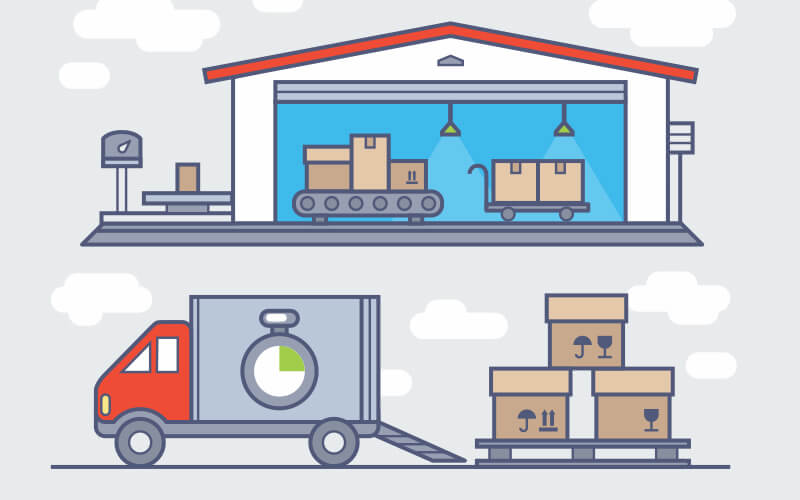An efficient warehouse is an effective warehouse, so it is best for a warehouse to operate as smoothly as possible. When warehouse operations are fast and reliable, companies keep costs low, workers confident, and customers happy. Here are ten quick tips to help you improve your warehouse efficiency.
Tips For Improving Warehouse Efficiency
1. Conduct A Warehouse Audit
The first step into converting your warehouse into an efficient workplace is to conduct an operational audit. Identify critical metrics such as costs and productivity rates within your operational flow. This allows you to gauge the efficiency or inefficiency within the whole system.

Warehouse worker and logistics manager doing products audit
An audit would help you recognize further or needed improvements, such as cost and error reduction, within the workflow.
2. Adopt A Lean Warehouse Operation
Maintain a lean methodology in operating your warehouse to reduce waste of any kind and only keep what you actually need. A lean warehouse cuts material handling time and decreases loading and unloading times of any vehicle. This also increases reliability, conciseness, and flexibility to adapt to market changes, simplifying processes, and reducing costs.
3. Maximize Warehouse Layout and Space
Establishing a good warehouse layout dramatically increases the efficiency of your warehouse. A well-thought-out warehouse plan reduces travel time between areas with more straightforward navigation and fewer safety hazards. Make sure your employees stick to the most efficient routes and follow correct procedures.

Empty warehouse or storehouse in daylight.
As for cubic space, make sure to use overhead areas adequately. This increases your facility’s utilization and maximizes the warehouse’s cost per square meter. However, always put safety first when erecting multilevel platforms.
4. Create An Inventory Hierarchy System
Using an inventory categorization system allows you to allocate proper resources to your most to the least valuable product or stock in terms of value. The hierarchy allows you to focus on prioritizing handling and security more closely of the items that make you the most money. This also ensures that you do not waste excessive time on less valuable items.
5. Invest In Your Warehouse Staff
Investing in your warehouse staff includes treating them fairly, providing regular training, and incentivizing good performance. Adopt an open-door policy allowing for openness in the workplace. Share productivity reports and other information freely, and ask for their opinions. All this leads to a corporate culture that creates confident, efficient, and knowledgeable employees.
6. Keep Your Warehouse Clean And Organized
An organized warehouse environment improves staff productivity and efficiency. Use the “5S” method of organizing workstations: Sort, Set in order, Shine, Standardize, and Sustain. This system speeds up daily processes, reduces errors, keeps the workplace clean, and improve overall safety. The method also allows employees to locate or retrieve equipment and items faster.
7. Optimize Picking Methodology
Determine whether the current picking methodology fits in your warehouse organization. As a core way to improve overall efficiency, using the right picking system directly influences the supply chain. Audit the current picking routes and processes to identify where you could save time. Also, consider upgrading picking equipment if it could improve your warehouse’s efficiency.
8. Analyze Supply Chain
Review whether the current supply chain flows smoothly, from the goods coming into goods going out. Develop compliance policies for everyone involved to reduce errors and the amount of time dealing with them. One broken link in a chain could lead to a broken system, costing you time and money.
9. Take Advantage Of Technology
Consider employing various warehouse technology to improve transaction accuracy and further reduce errors. A sound warehouse management system could include bar codes, radio frequency ID, voice-activated technology, and pick-to-label, automating processes.

Taking advantage of these extra hours
These new technologies allow you to collect real-time data, track your inventory, and determine your warehouse’s efficiency. However, do your due diligence when buying from vendors.
10. Watch And Report Your Metrics
Monitoring your warehouse operating metrics and reporting them to your staff would positively improve efficiency. Most employees become more confident when they know how they measure up to established metrics. Setting up productivity measurements would improve overall labor efficiency and helps you keep track of activities. However, keep in mind not to set too many metrics so as not to overwhelm the system.

